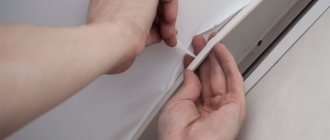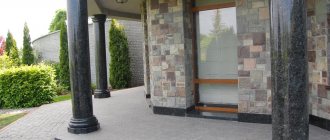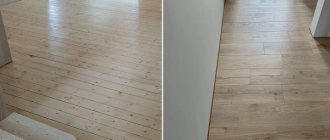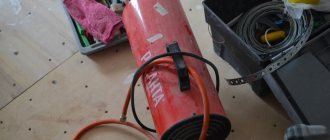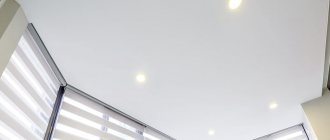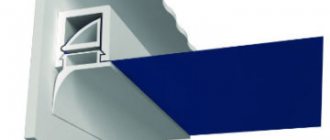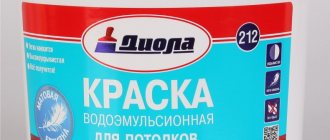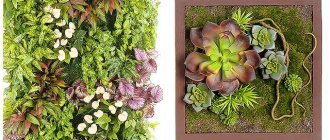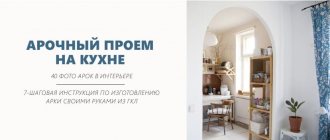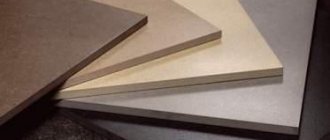Decorative cord for suspended ceilings is one way to hide the technological gap that remains next to the wall after installation. It is also used to mask the gap between levels in two-tier structures. In this article we will tell you how to choose and install decorative edging on the ceiling correctly. We will also consider the advantages and disadvantages of this finish compared to traditional ceiling plinths.
What is decorative cord
Kant is a rope woven from fibers. The composition includes both natural (for example, cotton) and artificial (polyester). Decorative cord has long been used for tying curtains, finishing furniture, etc.
Recently, edging has had another use - masking the gap between the suspended ceiling and the walls. Also, the edging is laid at the joints between different levels of multi-tiered structures and next to plasterboard boxes.
Decorative cord is combined with all types of wall coverings and ceiling textures. The edging is attached to both horizontal and vertical sections (for example, along a plasterboard box or the lower tier of a two-level ceiling). The insert becomes a bright and modern accent in the interior.
What types of inserts are there?
Stretch ceilings have been produced for decades. During this time, manufacturers have come up with many varieties of decorative inserts, differing from each other in shape, material, texture and installation method.
Form
According to the manufacturers' plans, the technological gap should be closed with a special masking tape insert. It is produced in several types in different colors. The fastening process is quite simple; no special tools or skills are required.
Despite many advantages, not everyone likes this solution - the plug in question emphasizes the curvature of the walls.
Therefore, this method of edging is chosen when the canvas is joined to a plasterboard box, or in rooms with the most even walls - for example, in a bathroom completely tiled.
In the case of not very smooth walls, various baguettes are chosen as a plug. They help to partially smooth out the difference between a completely flat canvas and an imperfect wall. At the same time, it is worth selecting it based on the number of shortcomings. The more defects you need to hide, the wider the border should be.
A plinth or insert is not the only option for masking a technological gap. An interesting alternative is decorative cord.
It was originally intended to decorate curtains and furniture, but designers discovered that it fits perfectly into the ceiling profile, closing the gap. The beauty of the edging cord is that it is very flexible, so it easily follows the shape of the most complex ceiling, and the variety of textures and colors allows you to choose an original addition to any style.
Advantages and disadvantages of this finish
In addition to the edging, the gap between the wall and the suspended ceiling is covered with a ceiling plinth or masking tape. Decorative cord has the following advantages compared to other options:
- It bends easily and takes any shape, so it is suitable for all types of structures and shapes.
- It fits tightly to the ceiling and leaves no gaps even on uneven walls.
- Thanks to its small width, it does not distort the proportions of the room.
- Tolerates temperature changes and high humidity, so it is used in any room.
- Easy to glue (in a room of 20-25 square meters, installation takes about 40 minutes).
- If necessary, cleaning or replacement can be quickly removed.
- Resistant to sunlight (does not fade over time).
- Available in a variety of colors and fits into almost any interior.
- It has been used in this capacity recently, so the finish looks fashionable and modern.
- It's inexpensive and you can install it yourself.
There are also disadvantages, but they are few:
- Collects dust (the disadvantage is compensated by the fact that the cord can be washed or cleaned with a vacuum cleaner).
- Due to its small thickness, it is not able, unlike plinths, to close large gaps. That is, it is not suitable for very curved walls.
Vinyl and non-woven lining will help hide crooked walls
Gluing wallpaper onto uneven walls is a fairly common method, and therefore manufacturers often meet the needs halfway, developing a wide variety of wallpapers from different materials and with beautiful designs. But not all materials can be used, since some types of wallpaper (paper, liquid, photo wallpaper), on the contrary, will highlight existing defects.
What wallpaper will hide unpleasant imperfections? Most experts definitely recommend vinyl and non-woven fabric as a kind of panacea for this scourge. Naturally, you will have to spend money on purchasing materials, however, by choosing materials that hide significant wall defects, you can give your home a cozy look.
The significant difference between vinyl and non-woven fabric is the following: the structure of the material in both cases is characterized by excellent density and multi-layering, which allows you to visually give the walls a smooth appearance. Vinyl looks more “glossy” (has a noticeable shine), non-woven, in turn, is matte and smooth. That is why it is recommended to cover hallways with vinyl, and non-woven material for bedrooms and living rooms. These materials will suit even the most demanding apartment owners, since at the moment manufacturers, taking into account all the nuances and wishes, produce vinyl and non-woven wallpaper with micropores - therefore, the walls will “breathe”, and the argument about the “non-environmental friendliness” of the materials is now irrelevant.
Among other things, gluing these types of wallpaper is quite simple: the main feature is that the glue is applied not to the sheets themselves, but to the surface of the wall. Thus, all that remains is to attach the sheet to it strictly vertically - and you’re done! Due to the specifics of the material, in uneven areas the wallpaper sheets will not move away from the walls due to uneven tension.
If you use such wallpaper, you can successfully hide the unevenness of the walls. However, the market offers a huge selection of vinyl and non-woven fabric, so let’s try to figure out what types of these materials exist.
Varieties of vinyl
Today, several different types of vinyl are produced, trying to please even the most demanding consumers. What they have in common is a fairly dense structure, and sometimes an imitation of natural materials, which we can rarely purchase due to price.
1.Foamed. The most budget option for those who want to get rid of the problem without extra effort and spending money. Thanks to the considerable density and texture, defects are reliably hidden from prying eyes, plus, the appearance of a 3D effect is often created, which many will like. The only drawback is the fragility of the decorative coating itself.
2.Hot stamping. Sheets of this type boast significant thickness, as well as excellent mechanical strength; vinyl has an extremely dense texture that perfectly covers any visible defects. Among the advantages are excellent water resistance, so feel free to carry out wet cleaning - it will not affect the quality of the vinyl in any way
However, when choosing this type, it is recommended to pay attention to varieties that have a matte finish instead of a glossy one.
3.Washable. It is not recommended to use it when hiding significant defects, since due to the glossy shine the camouflage effect disappears. Although, in cases where minor unevenness needs to be visually smoothed out, the use of washable vinyl is acceptable. Among other things, it tolerates wet cleaning very well, and you won’t have to live in a room with dirty wallpaper.
Types of non-woven fabrics:
Non-woven fabric boasts excellent fiber density and the presence of relief embossing on the surface of the sheets, which is why it is an excellent assistant in visually smoothing out wall unevenness. The structure of the material is very dense and rigid, and some manufacturers add a decorative detail in the form of a vinyl backing.
Non-woven wallpapers differ in white and painted. The second option is much less common, since non-woven fabric is produced for painting in most cases. It should be noted that direct painting is carried out after the sheets are glued to the wall, choosing special water-based paints (for example, acrylic), since solvent-based compositions corrode the surface of the non-woven material. After painting, the material acquires a matte appearance, therefore, any defects and irregularities will be practically indistinguishable.
Varieties of decorative edgings
Cords differ in composition, external finish and thickness. The basis of the rope can be:
- metal wire (the most durable option);
- rubber band;
- or cotton core.
The outer layer of the edging is made:
- wicker;
- twisted (easier to style, since the ends don’t get frizzy);
- knitted.
The thickness of the decorative cord is available from 8 to 20 mm. The optimal diameter that fits most ceilings is 10-12 mm.
The edgings can be plain or with a combination of two or three colors. The palette is very diverse, there are both light, bright and dark tones. The combination of canvas and edging can be contrasting or, conversely, complementary.
Cords with woven lurex threads (gold and silver) look expensive. The most commonly used are white, beige, all shades of brown and pastel colors.
Psychologists' opinion
As noted above, the color of the walls in the office has a direct impact on a person’s mental state, his performance, including the ability to concentrate on tasks and, in general, his productivity during the working day. In practice, many factors have been confirmed.
List of expert opinions:
- The design, rich in bright colors, is aimed at stimulating the nervous system.
- Decorative paint of different colors and shades can trigger migraines and increase fatigue.
- Calm tones are good; they increase performance.
- It is recommended to choose cool colors for small areas; they visually expand the space and provide focus on a particular task.
- The best results are achieved by combining warm and cold shades, and the effect on the human psyche will be positive.
- The green color is always pleasing to the eye; this solution ensures the concentration of employees’ attention, especially if their activities involve working on a computer.
- The design in gray tones is calming, but also allows you to fall asleep at work.
- Yellow color is used to increase mental activity.
- Decisions on choosing purple or blue colors will not be entirely successful; they suppress performance.
- Pink colors also have a negative impact on labor productivity.
The manager or his subordinates decide what color to paint the office. But if the work being done is related to creativity, then bright and rich colors should be used. For work that requires concentration, calmer shades are suitable.
How to choose a decorative cord
To choose the right decorative cord for a stretch ceiling, it is important to consider two parameters:
- The size of the technological gap (affects the appropriate thickness of the edging).
- The style of the room (the appearance, including the color scheme, is selected according to it).
The thickness of the decorative cord should match the size of the gap between the ceiling and the walls or be slightly wider (a few millimeters). Then the trim fits easily into the gap and does not fall out.
The appearance is matched to the interior. For example, in a lush decoration, a edging with gold thread or mother-of-pearl shine looks good. And in minimalist styles, plain cords are used.
The shape of the room is also taken into account. An edging matching the color of the stretch ceiling visually expands the space, making it suitable for narrow rooms or corridors. Finishes that match the tone of the walls are used in low rooms. This will make the ceiling appear higher.
Various color variations are possible. A cord that matches the tone of the ceiling, walls or combines their shades looks good. But such a coincidence is not necessary. Modern interiors are decorated with contrasting variations. This technique looks impressive if there is a photo print or pattern on the ceiling. But the walls must be perfectly smooth; any curvature due to the bright edging will be noticeable.
Peculiarities! To visually unify the interior, the same cord is used both to mask the joints and to decorate the curtains.
The type of outer layer (woven, knitted or twisted) is chosen according to your own preferences, taking into account the style of the interior. But the latter option is more common and there is a larger assortment, so it’s easier to choose.
Tips for choosing the color of the tape plug
Using polyurethane plugs of various tones, you can not only get rid of technical openings, but also decorate the interior in any style. With the help of the right color insert, you can visually transform the room. The modern market is saturated with plugs of various shades or ribbons made in several colors at the same time.
When choosing the color of the ribbon insert, you need to consider the following rules.
- A brightly colored insert should match the tone of some decorative component or interior items.
- An insert with a touch of wall decoration makes the room visually taller.
- The tape to match the ceiling covering visually expands the ceiling.
- Installation of an insert whose color differs from the color of the walls and ceiling is carried out only on smooth walls. Otherwise, the tape will make even minor unevenness of the walls and ceiling noticeable. It is advisable to use a contrasting plug to decorate curved elements of a stretch ceiling structure.
How to properly glue edging to a suspended ceiling
The decorative cord is fixed last, after the canvas is installed and the wall decoration is completed. The wallpaper is glued close to the ceiling, the maximum distance to the film or fabric is 0.5 cm (otherwise the cord will not be able to cover the joint).
To determine the amount of edging required for a single-level ceiling, measure the perimeter of the room. For complex structures, take into account all the joints where the masking cord will be located.
Decorative edging is supplied in 25 meter reels, from which the required length is cut. Like other finishing materials, it is recommended to buy the cord with a small margin (0.5-1 meter) for undercutting or errors in calculation.
Additionally you will need:
- hot melt adhesive (sometimes replaced with sealant);
- a special gun for him;
- extension;
- stepladder or stool;
- sharp knife;
- “superglue” or “cosmofen” for finishing edges.
Before installation, the furniture is moved away from the walls to create a free passage. To start laying, choose the least noticeable corner or the most curved section.
Peculiarities! Sealant is available in different colors. White is universal, but you can choose another one that matches the ceiling or the product itself.
Working technology:
- The beginning of the decorative cord is filled with “cosmofen”, and after hardening it is cut with a knife. This will prevent the edge from falling apart into fibers.
- Lay out the edging on the floor next to the walls.
- Using a hot-melt gun, apply glue to the wall into the gap near the edge of the stretch ceiling.
- Press the cord along the gap. There is no need to press hard so as not to damage the canvas.
- Having reached the corner, they turn and continue to install.
- Carefully trim. The ends of the rope are secured end to end. There should be no noticeable gap or overlap.
Important! It is not recommended to use a spatula or other sharp tool for installation - you can damage the canvas.
Let's look at one example
You will need: a stable, comfortable stepladder, a heat gun with special glue, and an extension cord.
Operating procedure:
- Free up as much as possible for the unobstructed passage of the stairs.
- Identify a corner of the room that is hidden from view - perhaps behind a closet. The junction of the ends of the cord will be located in it.
- Spread the product around the perimeter of the clean floor.
- Apply superglue all the way through the ends of the cord. Let it dry. This is done so that it does not fluff up later.
- Cut 1.5-2 cm from the edge.
- Using your hands and a gun, glue the edging around the perimeter of the ceiling. Carefully trim and form a high-quality joint. There will be enough traction to support the weight of the edging.
How to insert piping into a gap without glue
This installation method is used for narrow types of edging. The width of the decorative cord should be slightly larger than the gap. During installation, the rope will compress slightly, then straighten out and will not fall out.
As in the first case, installation occurs at the final stage of finishing. The edge is processed.
The edging is applied to the gap and pressed inward. Use your hands or a spatula (but with great care). The end is cut so that it fits evenly to the beginning.
Advice! If furniture cord is purchased in small pieces, which are not enough for the whole room, it is better to make joints in the corners. This way the connection will be invisible.
This method is more labor intensive. But the trim is easy to pull out to clean it from dust or replace it with another one.
Seventh idea: panels made of boards
Wooden products are becoming more and more popular every year due to their environmental friendliness, durability and wonderful appearance. In addition, they fit perfectly into all interior styles: minimalism, classic, country and so on. One of the options for such products is wooden panels, which are made from boards.
You can build such a decorative element yourself. You will need to prepare a base, paint it in your favorite color and transfer an ornament, inscription or some kind of design onto it. It won't take you much time, but in the end you will have a really beautiful designer item in your hands.
Photos of suspended ceilings with edging
A decorative cord is used instead of a plinth to hide the technological gap when installing suspended ceilings. The edging is easily attached and, if necessary, removed and reinstalled. The choice is quite wide, so the textile edging can be selected to suit any design.
